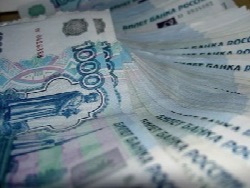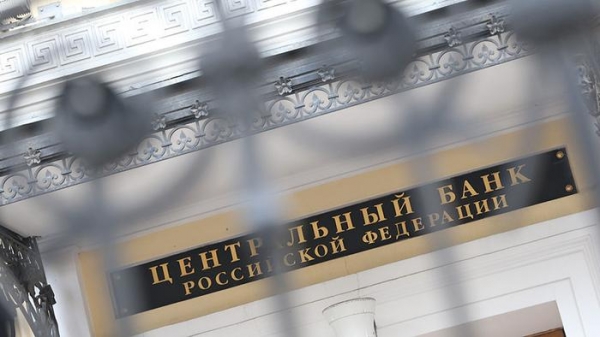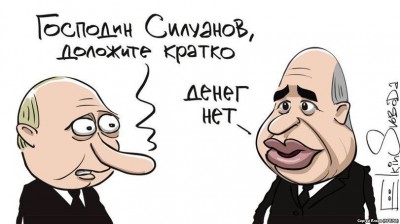
One of the main obstacles for the development of national production in Russia are high interest rates and unavailability of credit. While American industry is credited under 2,25%, and the average cost of credit in Japan and some European countries and lower in Russia the average interest rate is 15.9 per cent. Limited access to credit resources in Russia leads to the under-sourcing investment. If in developed countries the loan is more than 40% in the structure of sources of investment in Russia — less than 10%. However, without borrowed funds investment process is unthinkable in the modern economy. It is obvious that the restoration of Russia’s economic potential is impossible without addressing the credit and investment resources. And without a strong economy that Russia has no future.
THE WAYS TO SOLVE THE PROBLEM
Clear need of enforcement mechanisms to overcome the existing problem of high interest rates and available credit. The tools needed to generate and bring cheap money to producers. The traditional fear of the government and the Central Bank about a possible acceleration of inflation in this case is not entirely justified. First, the monetary character of inflation in Russia is overestimated. Secondly, illusion is the belief that inflation in Russia can once and for all to suppress — as far as can be judged, it is of asymptotic character, that is, at a certain background level inevitably exists in the economy. Third, many economic statistics of countries shows that in the conditions of economic growth the growth of the money supply at a faster rate than GDP may be perfectly consistent with low inflation. Finally, it is necessary to cease to fight inflation to the detriment of the real sector and move to a policy of stimulating economic growth.
Institutionally, such a mechanism cheap lending to the real sector can be implemented in one of several possible forms: target refinancing, budget subsidies payments for loans, budgetary credits, budgetary funds and extra-budgetary funds. The specialized nature of these institutions is that they are focused on concessional lending to manufacturers. In other words, they ensure the availability of credit and investment resources for enterprises. This can be done both by establishing lower interest rates (compared to market) and through the participation in the profits when the creditor does not establish a fixed percentage, and divides by borrower income and risks (the classical scheme of Islamic banking). Of these instruments one way or another is already used in Russia. However, their implementation, and most importantly, negligible amounts, as a rule leaves much to be desired. Consider these institutions.
TARGET REFINANCING
Under the refinancing task will be to understand lending to commercial banks by the Central Bank for the purpose of lending to industrial companies for specific investment projects. The source of funds in this case is the issue of the Central Bank, which lends to commercial banks at preferential rates. Banks, in turn, bring credit to end customers is also low-rate. The loan is issued under collateral of obligations of the production companies and/or government guarantees.
In Russian this Institute is implemented in the form of project financing from October 2014. However, traditional inflation phobia of the monetary authorities cannot realize the potential of project financing in full. It is expressed in small amounts spent into the economy through project financing and in unreasonably high for concessional lending interest rates.
The state sets a limit on total loans under the project financing. The impression that these limits are significantly underestimated relative to the real needs of manufacturers. For example, last year they were exhausted by the middle of the year, which indicates a high demand for investment and credit resource.
Under the terms of the project financing in 2015, loans were granted only to 236 billion rubles. At the same time to start the modernization of the Russian economy is required to increase the size of investments into the fixed capital by at least 4 trillion rubles. Thus, project financing could provide only 6% of this amount.
To receive funding a project must be selected first in Vnesheconombank, which acts as the agent of the government, and then the interdepartmental Commission.
Under the program, the cost of credit depends on the size of the key rate of the Central Bank and for the borrower is not more than 11.5%.
The question arises: why the need for such a program, which after all the many tests and examinations does not provide Russian company equal competitive conditions with foreign counterparts?
Target refinancing as a tool for investment and lending money issue, irrespective of its specific implementation in modern Russia has a number of drawbacks.
First, it involves the use of banks, which by virtue of its commercial status is not always interested to participate in this project. After all, the purpose of the Bank is to maximize profits, and direct lending requires margin limits. This contradiction leads to lower efficiency of the whole mechanism. In order to avoid unnecessary trouble and to get rid of excess risks, the Bank may more readily reject the project, which will take over its financing.
Secondly, a serious problem is the control of target use of allocated funds on the banks. A typical example is the behavior of Russian commercial banks during the crisis of 2008-09. The government has allocated several trillion rubles were used by the banks to game the foreign exchange market, which led to the decline in the Russian gold reserves at tens of billions of dollars.
Thirdly, the transition of banks to the funding of the Central Bank leads to loss of their interest in attracting deposits. This theoretically entails a drop in rates on deposits and, as a result, lower income depositors.
Finally, the challenge is to assess the viability of projects proposed by borrowers. Commercial banks do not always have competent professionals who could do this work, and the “bandwidth” of the specialized commissions at the government level are limited. As output could be considered transmission functions as defined by the resource allocation specialized state development banks. But the ability to follow the desired status of these banks is questionable. For example, state ownership of the control shares act does not prevent Russian banks (Sberbank, Gazprombank, VTB, etc.) using a classic commercial institutions. The same applies to public corporations, which are formal legal status at all are non-profit organizations.
BUDGET TOOLS LENDING
Common sense budgeting tools concessional lending is that the source of funds for lending to the productive sector is the state budget.
First, resources from the budget can be directed to subsidize the payments of the borrowers on loans. Subsidies can cover both interest payments and part of the cost of the loan.
Secondly, public authorities themselves can issue loans to enterprises from the budget.
Finally, from the budget may be financed special funds, granting loans to producers. One example of such a Fund in Russia is the industrial development Foundation. It enables enterprises to borrow loans for implementation of investment projects under 5%. However, the aggregate magnitude of the investment through the FER is small. Last year the budget of the Fund amounted to only 20 billion.
A principal disadvantage of these mechanisms is that the source of funds are revenues to the state budget and their capacity would require increasing the tax burden or increasing government debt.
Although it is understood and fundamental difference between budgetary financing from subsidies. If subsidies are grant nature, budgetary loans granted on a returnable basis. Therefore, public debt, resulting from the increasing amounts of government lending, not as dangerous as classic debt. Because of budgetary crediting implies the return to the budget funds from which the debt can be paid. However, in the absence of increased demand for government debt securities will not provide low interest on them and, therefore, not be able to lend at a low interest rate and businesses. Therefore, in this case it is expedient purchases of government securities by the Central Bank under artificially low interest rates. In fact, this scheme corresponds to the refinancing of industrial growth, but not through commercial banks and through the budget.
The disadvantage of this mechanism is that state agencies distributing the budget do not always have sufficient staffing capacity to assess the viability of investment projects.
GWICH
Obviously, required a specialized institution, which would avoid the drawbacks of the above mentioned mechanisms. This Institute should be off-budget Fund. Its application would send money issued by the Central Bank directly productive enterprises, bypassing intermediate layer in the form of commercial banks. Thus, we could have solved the problem of contradictions between the status of commercial banks and their non-profit function within the framework of the mechanism of preferential crediting of producers. Would disappear and the danger of deformation of the lending and Deposit process through the banking system, as the Foundation it simply does not intervene. Finally, in a case involving a Fund worthy of the human resource would be to establish a systematic work on assessing the viability of investment projects and objective selection of worthy requests for funding.
The center of scientific political thought and ideology developed by the project of this Institute. It is called State non-budgetary investment credit Fund (GWICH). This Fund could channel investment resources into the economy in three circuits:
The second of the three contours will require increased control over targeted use of funds. In the case of a critical increase in inflationary risks or destabilization of the banking market, the use of this circuit may be limited.
Legal form GWICH — Autonomous state institution in the form of a state extrabudgetary Fund, have the status of non-Bank credit organizations. To create GWICH will require the adoption of a special law “On State non-budgetary investment credit Fund of the Russian Federation (GWICH)” and amendments to several existing legislative acts of the Russian Federation. All the necessary legislative proposals developed as part of a package of legislative initiatives.
GVICT is not some independent authority, usurping monetary policy of the country. GWICH will be subject to banking supervision by the Central Bank of the Russian Federation. It falls under the administration of the President of the Russian Federation, the government of the Russian Federation, Federal Assembly of the Russian Federation. Coordination of GWICH will be implemented by the Ministry of economic development of the Russian Federation.
As property in operational management of GWICH (as a state institution) is transferred to the property of liquidated banks: “Russian agricultural Bank” and “Bank of development and foreign economic Affairs (Vnesheconombank)”. In other words, GWICH will be created based on them. Founder and owner of GVICT is the Russian Federation.
GWICH may be partially transferred on a returnable basis of the Russian reserves, which would lend to Russian companies in foreign currency. In the case of a real transition towards import substitution this option takes on real urgency as the national fixed assets will require the purchase of equipment and technology abroad. But the main source of Fund for lending to manufacturers is the purchase of bonds by the Central Bank.
Margin (the difference between the interest rates on which GWICH attracts resources, and the interest rates at which it lends to businesses) is small, as the funds GWICH producers at preferential low interest rates. So his income may not be enough to cover all operating expenses. It is therefore advisable to provide additional funding for operating expenses GVICT the budget. This will insure GWICH from rolling to the strategy of maximizing their profits at the expense of its statutory purposes, which is characteristic of many Russian organizations, formally considered development institutions.
In General, GWICH should organically fit into the monetary system of the country, correcting its deformation in part of the high cost of credit for productive investment and not allowing the emergence of new strains in adjacent sectors (Fig. 1).
Fig. 1. Circuit of GWICH in the public and commercial economic ties
CONCLUSION
In conditions when monetary authorities are limited to the minimum measures to overcome the problem of tight money, modernization of economy and realization of strategy of import substitution becomes infeasible. To remedy the situation requires the introduction of specialized tools of monetary policy, which would use currency issue of the Central Bank as a source of cheap loans for implementation of investment projects of domestic producers.
Fear of inflation, which show a responsible public authorities and which hampers the creation of such tools in the country, was inappropriate.
Among all possible forms of bring cheap credit to the real sector of the greatest benefits of the tool for additional non-profit Foundation. The project of this Fund and required the introduction of a package of legislative initiatives developed by the Center for scientific political thought and ideology in the form of State non-budgetary investment credit Fund.








